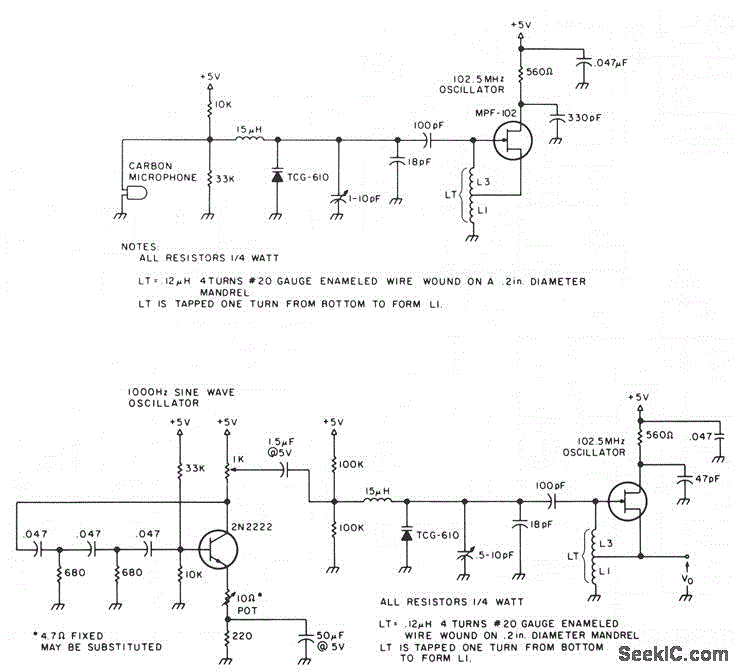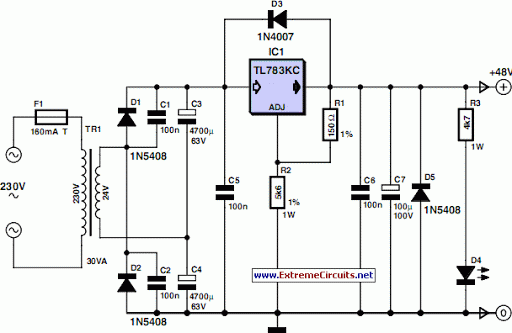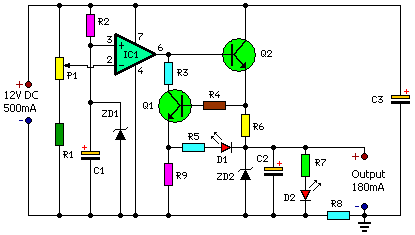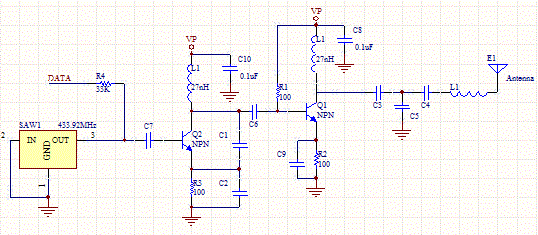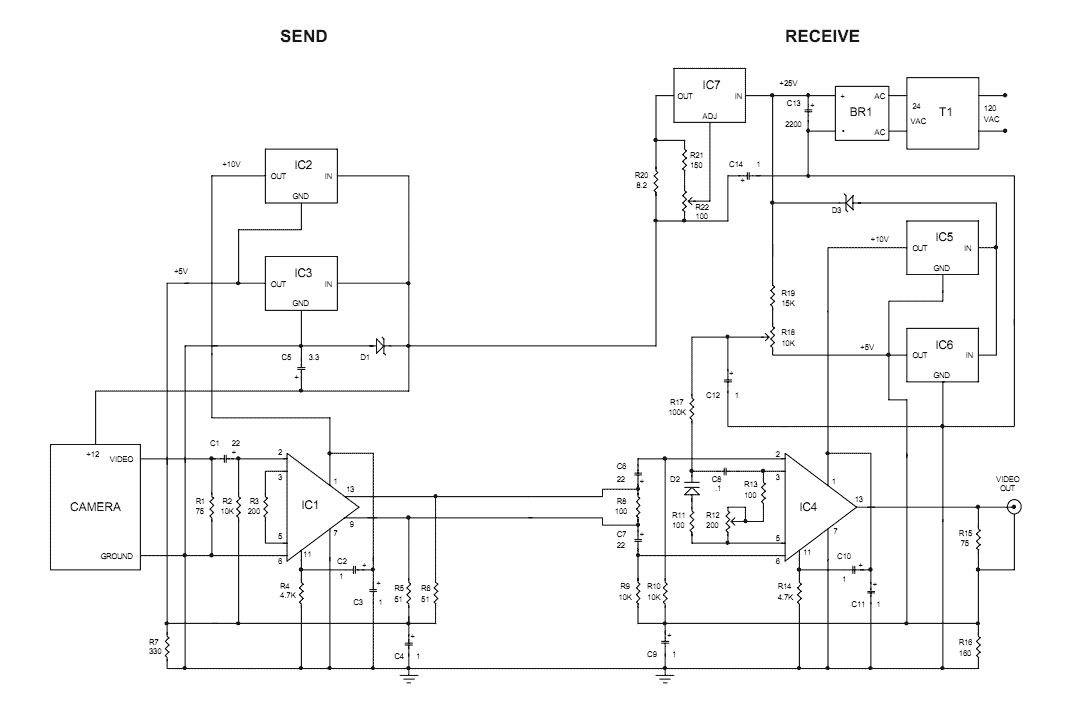
Phone FM Transmitter
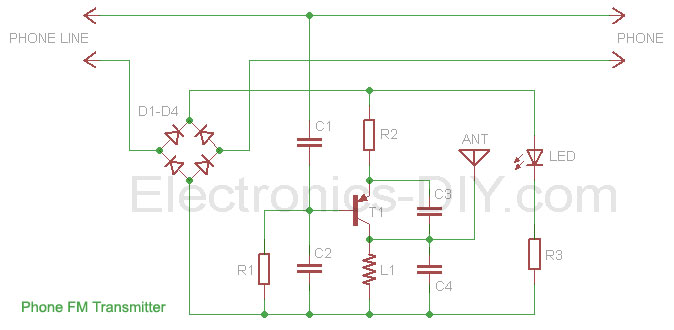
This phone FM transmitter connects in series to a telephone line and transmits telephone conversations over the FM band when the telephone handset is picked up. The transmitted signal can be tuned by any FM receiver. The circuit includes an "On Air" LED indicator and provides a switch to turn off the transmitter. A unique feature of the circuit is that it does not require a battery, as it draws power from the telephone line. The transmitter uses a short wire aerial, approximately 4 inches (10 cm) long, to transmit the signal, with some RF signal also radiated through the telephone line itself. The circuit may be used to share or record conversations but is not intended for illegal use.
The described phone FM transmitter operates by integrating with a standard telephone line, allowing for the wireless transmission of conversations through the FM radio frequency band. The key components of this circuit include a series connection to the telephone line, an audio amplifier, a modulator, and an antenna.
When the telephone handset is lifted, the circuit is activated, and the audio signal from the telephone is fed into the audio amplifier. This amplifier boosts the audio signal to a suitable level for modulation. The modulator then encodes the audio signal onto a carrier frequency, which is within the FM band. The output from the modulator is then transmitted via a simple wire aerial, which serves as the antenna. The length of the aerial is critical; at approximately 4 inches (10 cm), it is tuned to efficiently radiate the modulated signal.
An "On Air" LED indicator provides visual feedback, showing when the transmitter is active. The inclusion of a switch allows the user to deactivate the transmitter when not in use, ensuring that conversations are not unintentionally broadcasted. This feature is important for maintaining privacy and control over the device's operation.
Powering the circuit directly from the telephone line eliminates the need for batteries, making it a convenient and low-maintenance solution. The RF signal generated by the transmitter can also utilize the telephone line as an additional transmission medium, enhancing the overall range and effectiveness of the device.
While the circuit can serve legitimate purposes, such as sharing and recording conversations, it is essential to emphasize that it should not be used for illegal activities or without the consent of all parties involved in the conversation. Compliance with local laws and regulations regarding audio transmission is crucial when employing this technology.This Phone FM transmitter connects in series to your telephone line and transmits the telephone conversation over the FM band when you pick up the telephone handset. Transmitted signal can be tuned by any FM receiver. The circuit includes an "On Air" LED indicator and also provides a switch which can be used to turn off the transmitter.
A unique f eature of the circuit is that no battery is needed to operate the circuit since power is taken from the telephone line. The transmitter uses only a short piece of wire aerial about 4" / 10 cm long to transmit the signal and some of the RF signal is also radiated through the telephone line itself.
The circuit might be used to share or record conversations, but is not intended for illegal use. 🔗 External reference
The described phone FM transmitter operates by integrating with a standard telephone line, allowing for the wireless transmission of conversations through the FM radio frequency band. The key components of this circuit include a series connection to the telephone line, an audio amplifier, a modulator, and an antenna.
When the telephone handset is lifted, the circuit is activated, and the audio signal from the telephone is fed into the audio amplifier. This amplifier boosts the audio signal to a suitable level for modulation. The modulator then encodes the audio signal onto a carrier frequency, which is within the FM band. The output from the modulator is then transmitted via a simple wire aerial, which serves as the antenna. The length of the aerial is critical; at approximately 4 inches (10 cm), it is tuned to efficiently radiate the modulated signal.
An "On Air" LED indicator provides visual feedback, showing when the transmitter is active. The inclusion of a switch allows the user to deactivate the transmitter when not in use, ensuring that conversations are not unintentionally broadcasted. This feature is important for maintaining privacy and control over the device's operation.
Powering the circuit directly from the telephone line eliminates the need for batteries, making it a convenient and low-maintenance solution. The RF signal generated by the transmitter can also utilize the telephone line as an additional transmission medium, enhancing the overall range and effectiveness of the device.
While the circuit can serve legitimate purposes, such as sharing and recording conversations, it is essential to emphasize that it should not be used for illegal activities or without the consent of all parties involved in the conversation. Compliance with local laws and regulations regarding audio transmission is crucial when employing this technology.This Phone FM transmitter connects in series to your telephone line and transmits the telephone conversation over the FM band when you pick up the telephone handset. Transmitted signal can be tuned by any FM receiver. The circuit includes an "On Air" LED indicator and also provides a switch which can be used to turn off the transmitter.
A unique f eature of the circuit is that no battery is needed to operate the circuit since power is taken from the telephone line. The transmitter uses only a short piece of wire aerial about 4" / 10 cm long to transmit the signal and some of the RF signal is also radiated through the telephone line itself.
The circuit might be used to share or record conversations, but is not intended for illegal use. 🔗 External reference
